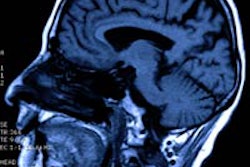Dear AuntMinnie Member,
The U.S. government's payment system for Medicare and Medicaid is changing from a fee-for-service model to one based on quality, thanks to last year's passage of the Medicare Access and CHIP Reauthorization Act (MACRA). So what's the best way to get ready for this paradigm shift in reimbursement?
We provide some guidance in a new article in our Imaging Leaders Community. Associate Editor Kate Madden Yee interviewed Dr. Ezequiel Silva, chair of the American College of Radiology's Commission on Economics, and got some great tips on steps that radiology practices can take now to prepare for MACRA.
Dr. Silva offers an overview of the MACRA program, in particular how the quality-based incentive system will work. For example, the Medicare process will use a point system to determine whether practices are meeting quality targets -- so get your calculators ready.
Get the details and learn what else you can do by clicking here, or visit the community at leaders.auntminnie.com.
Race and sex impact who gets brain imaging
Interest has been growing in research on disparities in healthcare services. A new study in our MRI Community follows in this vein, indicating that patient demographic factors such as race and sex can influence who gets brain imaging in cases of stroke.
For example, the researchers found that men were more likely than women to receive MRI and MR angiography, although there weren't any statistically significant differences in the use of CT and ultrasound based on gender.
And African-American patients were actually more likely to receive advanced imaging scans -- a finding the researchers said they didn't expect. Learn more by clicking here, or visit our MRI Community at mri.auntminnie.com.



















